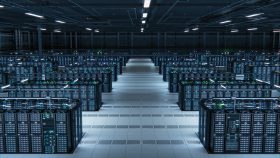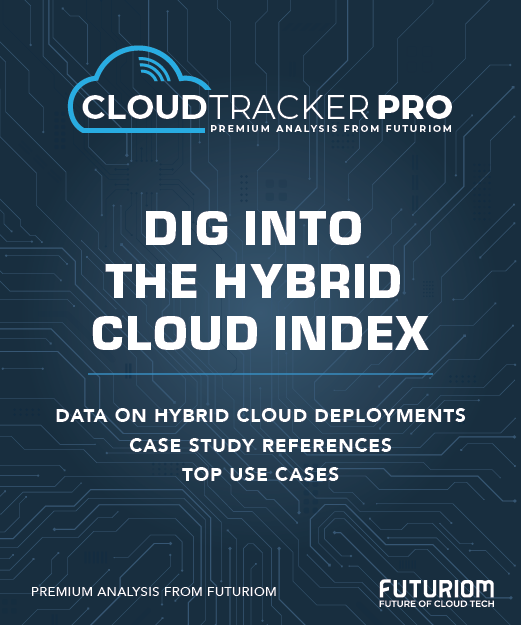Neoclouds vs. Hyperscalers: What’s the Difference?

In the emerging market of "neoclouds," which are the cloud providers specializing in providing the rental of graphical processor units (GPUs) as-a-service, CoreWeave's recent IPO created excitement about this market. But as part of the IPO process, investors had to ask what makes CoreWeave stand out, not only from its peers but from the hyperscalers that also offer GPUs.
So far, its competitive differentiation has focused on claims of pricing and performance advantages -- with the raw availability of GPUs being an attraction as well.
But GPU supplies should stabilize eventually. And in terms of price and performance, CoreWeave hasn't been alone. A whole sector of neoclouds—datacenter operators focused on providing GPUs—sprouted in recent years, driven first by cryptocurrency and now by AI, which promises a more stable source of long-term demand. They grew up amid a rush for GPU cycles—and now they face the same questions as CoreWeave: What sets them apart, if they all provide good price and performance?
Meanwhile, the hyperscale public clouds face a similar issue. Now that neoclouds have become established as GPU alternatives, how do the clouds retain enterprise customers and/or convince them that the cloud is still the best home for AI applications?
There's an "bifurcation" in how the two camps cater to the market, as Rohit Kulkarni, managing director at Roth Capital Partners, described it in a report last week. He sees signs that the hyperscalers are shifting the conversation to security and data privacy, while the neoclouds are still emphasizing ROI and price performance.
The hyperscaler argument can go even further: Having ensconced themselves in enterprise operations, they can claim to be better positioned to fit AI into those operations. They can appeal to an enterprise's strategic needs, whereas neoclouds are built to address tactical needs -- and Kulkarni argues they've continued doubling down on those factors.
The truth isn't that extreme (we'll get to that) but Kulkarni has a point. I caught hints of it at NVIDIA's GTC 2025 last month. Quick flybys of neocloud exhibit booths revealed similar-sounding stories: massive capacity, competitive prices, global presence. Those factors stand out only as long as GPUs remain scarce. They will need to offer more as capacity catches up to demand. Or consider the DeepSeek scenario: As enterprises, especially large ones, find ways to use fewer GPUs to accomplish their AI work, what happens to the providers that offer little more than inexpensive GPU cycles?
Climbing the Stack
CoreWeave tried to address that question when it went public. The S-1 filing came alongside an announced intent to acquire Weights & Biases for its LLMops and MLops prowess. Arguably, the timing was not a coincidence, because the S-1 was going to make it clear that plenty of CoreWeave peers are also adept at providing bare metal GPUs. Weights & Biases could strengthen the IPO case by providing evidence that CoreWeave strives to be more. (It didn't necessarily work, judging by the stock performance, but it was still a good idea.)
The public clouds, on the other hand, have arsenals of full-stack services and enough experience to anticipate enterprises' needs. As LLMs become even more ensconced in enterprise life and graduate from the experimental phase, those Day 2 effects will loom large. Separately, enterprise awareness of security and data privacy issues is heightened, enough to prod the clouds into emphasizing their prowess there.
We can look at Google Cloud Next for recent examples. One of the major announcements, Google Unified Security, was not AI-specific but included the promise of Gemini-driven agents keeping watch over AI workloads. It's the kind of security angle that Kulkarni was indicating.
Then there's Google Agentspace. Launched in December, it applies Google's own foundational models and agents to the enterprise. At Google Cloud Next, the company added the ability to run Agentspace searches in the Chrome browser, letting employees search their organization's entire knowledge base across multiple sources and apps (with appropriate guardrails, of course). At the conference, Google also introduced a no-code Agent Designer. All these features help non-experts both use and develop AI models.
Finding Middle Ground
For the public clouds, this kind of handholding became de rigeur as cloud usage went mainstream. They can use that same playbook for AI. They provide foundational models and now agents, and for the inexperienced enterprise, they also offer a path toward usage, whether through advanced tools or managed services.
Having the cloud stack and speaking the enterprise's language are important advantages. Kevin Cochrane, chief marketing officer of Vultr, noted that he's talking to customers who are skeptical of neoclouds' ability to support security and compliance, not to mention integration with existing cloud applications. Enterprises need a full cloud stack and regular CPU computing, not just GPUs, he said.
All of that, combined, presents a high hurdle for the neoclouds, so it's not surprising that they would continue playing their strength—quick, relatively affordable access to bare metal. Hence, the continued obsession with tactical pieces: price, ROI, global presence. Longer term, though, they'll need to broaden.
The neoclouds realize this, of course. Lambda, for example, is targeting developers within large enterprises, helping them build inferencing strategies. Nscale similarly touts its ability to help enterprises build and deploy models. Neoclouds also don't have to offer everything. In fact, they can spin minimalism into a benefit, arguing that public-cloud customers can get entangled in fees and bundled services. Even as neoclouds move up the stack, they can promise streamlining: We offer more than just racks of GPUs, and we don't overwhelm you with unneeded features. The neoclouds that reach that intermediate ground will stand the best chance at thriving.














